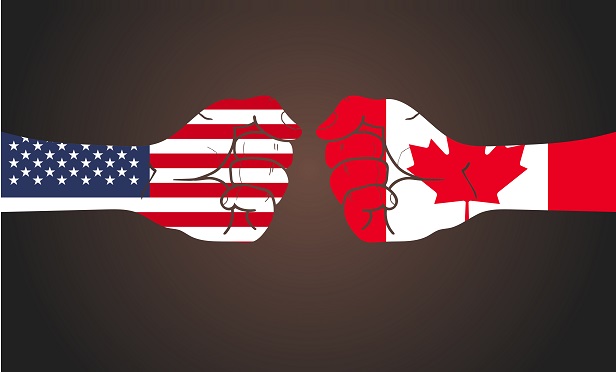 Whenwe talk about creative plan designs, we mean a longer-term strategydesigned to make a difference for employees, save money on theplans, and provide higher quality outcomes. (Image:Shutterstock)
Whenwe talk about creative plan designs, we mean a longer-term strategydesigned to make a difference for employees, save money on theplans, and provide higher quality outcomes. (Image:Shutterstock)
Your clients are drowning in the rising costs of employee health insurance, and it may feel likethere are no options other than paying the increases or droppingthe benefit altogether and paying the fines. But there aresolutions.
|The key is knowing what options are available and how you canpair services together in a way that works for each employer.Uncovering their needs, understanding their business goals, andcrafting a workable solution that helps reduce costs and improveoutcomes truly makes you an indispensable advisor.
|In our session at the 2019 BenefitsPRO Broker Expo, a group ofsavvy and honest advisors will share stories about what's workedwell and what's not worked out so well as they've implemented newsolutions with their client groups. We'll find out what they'redoing, how they're doing it, and how they're able to educateclients to the point of making the necessary changes.
➤➤Be sure to attend WendyKeneipp's Innovation Track session, “How to help employers reducecosts & improve outcomes with creative plan designs” April 3 at4:15 p.m. at the 2019 BenefitsPRO Broker Expo.
Bret Brummitt of AG Insurance Agencies, Josh Butler of ButlerBenefits, and Rachel Miner of Thrive Benefits will share theirinsights and lessons. They are a wealth of information, having putvarious plan designs in place for clients of different sizes,industries, and experience levels.
|What exactly does it mean to use creative plan designs?
When we talk about creative plan designs, we mean stepping outof the traditional stand-alone, retail health insurance plans.Instead, the goal is to create a longer-term strategy designed tomake a difference for employees, save money on the plans, andprovide higher quality outcomes.
|Plans and strategies will vary,but include pairing smartincentives for employees with programs that have some kind of ROIfor the employer. This ROI may initially just be unlocking somekind of data insight to make the case for other changes.
|These types of changes can be intimidating for an employer, sotaking an educational, data-gathering approach is going to lead tomore informed decisions and clients who are more committed to newstrategies.
|Moving into creative plans designs isn't for everyone. Gettingstarted with innovative companies that are looking for ways toreduce costs, while enhancing benefits, is a good place tostart.
|How do you introduce the ideas to employers?
From a sales perspective, it can be tricky introducing ideas toemployers that may be radically different from anything they'veknown, and you have to approach it carefully. Offering educationand a personalized incentive for change is an important part of theprocess.
|A good way to get that conversation started is by resetting thebaseline expectations of the traditional health insurance plans.Choosing the best of what most consumers consider to be all badoptions isn't an acceptable or sustainable path. We have to godeeper to uncover a new potential. After getting buy-in to the newexpectations, the conversation must then center around educationfor employers on the utilization and cost of care, notinsurance.
|And just a word of caution for all the over-eager sales peopleout there who are enamored with the potential cost savings. Duringthe sales process, pay close attention: Who wants this change more?Is it the advisor or the client? If it's the advisor, you're on theroad to a failure. The client has to be ready or the adoption willfail.
|How about the employees?
Upsetting the apple cart of employee comfort can be incrediblydisruptive and you should approach it with caution. The advisorsreadily admit to this being the toughest challenge. Keeping peoplemotivated throughout the year is difficult, so communication isparamount.
- Use drip campaigns to reinforce why the employer chose certainstrategies or resources.
- Be honest and tell employees there is going to be a change.Sometimes change is beautiful; sometimes it's hard. But most of thetime, it's both. Encourage them to call their advisor for help whenthey're confused or frustrated, and it will go smoother.
- Use some kind of provocative or ridiculous story to tell a reallife scenario. The more ridiculous the scenario, the better theaudience engagement.
When you implement the plans, does everything go asintended?
We got a pretty resounding no on this one! Hindsight is always20/20. Problems include:
- Implementing a solution with a poor communicationstrategy. Advisors may understand the strategiesperfectly, but the employees need it broken down into a process,and they need to be reminded regularly.
- Not respecting the magnitude of the changesand how they affect everyone in the company and on the plan.Employee experience is paramount. If you approach an innovativeplan like you would a traditional renewal, that's grounds to getfired, and you probably deserve it.
- Not communicating the reality of the workload andexpectations. These strategies require more work from theadvisor and the HR department. Setting the right expectations fromthe beginning is critical. HR and Finance need to know each other'sgoals and be supportive of one another and those stated goals.
- Vendors. A lot of navigating value-basedinsurance design (VBID) is trial and error. Vetting partners is ofcritical importance. One bad spoke in the wheel will cause the restof it to fall apart. Sometimes, vendors are tripping over eachother and get very territorial. And it's not cheap to hire a numberof different vendors who all charge fees.
Bottom line is that creative plan designs can be incrediblybeneficial for both the employers and employees, but the advisormust take a strong lead. Education, communication and processes foremployers, employees, and your own team members will be themake-or-break points for successfully adopting a new approach tobenefits.
|Don't miss these other Exposessions:
Complete your profile to continue reading and get FREE access to BenefitsPRO, part of your ALM digital membership.
Your access to unlimited BenefitsPRO content isn’t changing.
Once you are an ALM digital member, you’ll receive:
- Critical BenefitsPRO information including cutting edge post-reform success strategies, access to educational webcasts and videos, resources from industry leaders, and informative Newsletters.
- Exclusive discounts on ALM, BenefitsPRO magazine and BenefitsPRO.com events
- Access to other award-winning ALM websites including ThinkAdvisor.com and Law.com
Already have an account? Sign In






